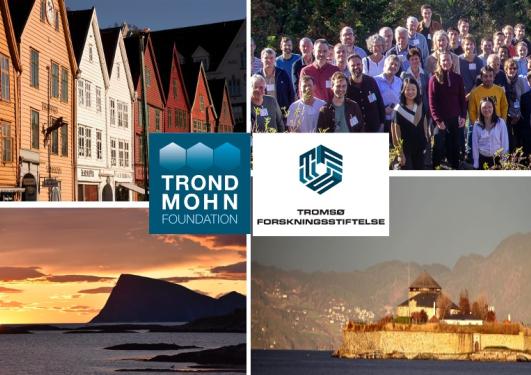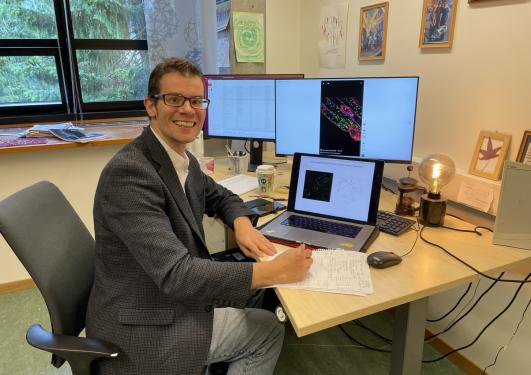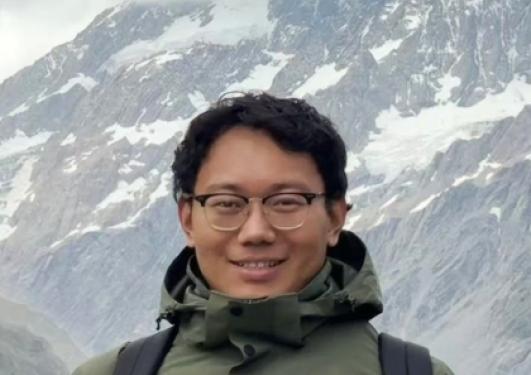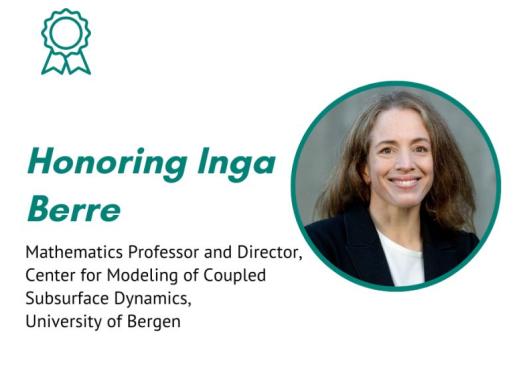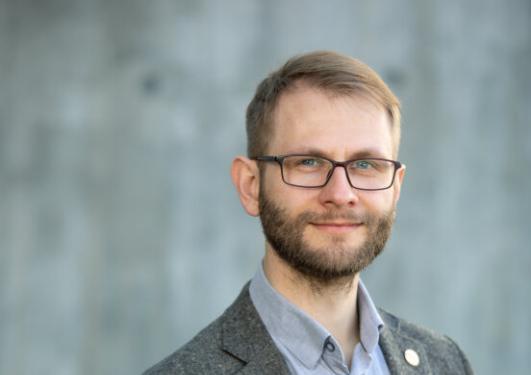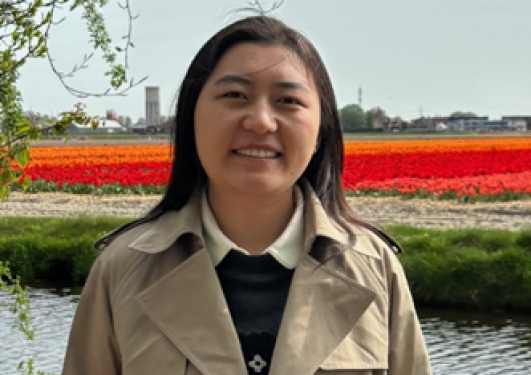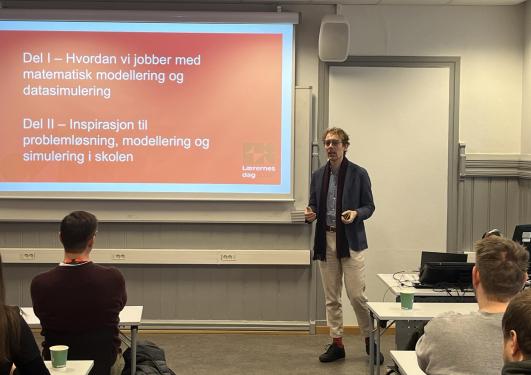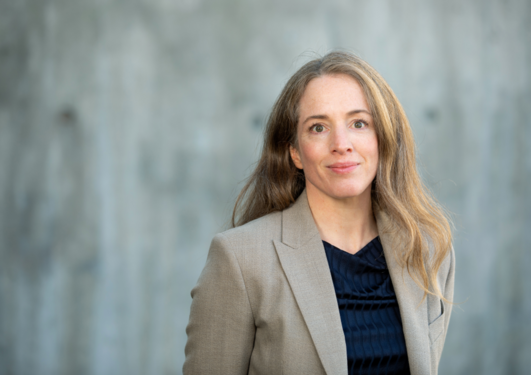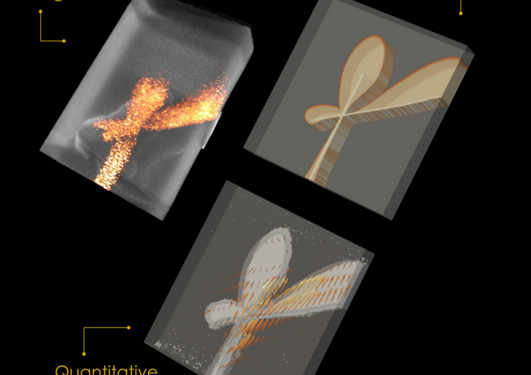News archive for Department of Mathematics
In the Research Council of Norway’s recent evaluation of national research, the Porous Media Group is recognized for its research excellence, and as an internationally leading research group in Applied and Computational Mathematics.
Trond Mohn funding has given seven years of growth and renewal
What does the inside of a plant have in common with a city? Perhaps more than you think.
The invited commentary titled "Regional scale subsurface modeling" written by group members Inga Berre and Jan Martin Nordbotten, together with coauthors Paola F. Antonietti, Rainer Helmig and Marc Hesse received the front page of vol. 2 no. 2 of the InterPore Journal.
Ronghao Cui is a new postdoc researcher at the Department of Mathematics and his project is part of the Center for Modeling of Coupled Subsurface Dynamics. We met him to find out more about his background and the project.
Ivar Stefansson receives funding for four years to investigate new techniques for simulating fracture propagation.
SIAM (Society for Industrial and Applied Mathematics) has celebrated Women’s History Month in March by highlighting influential women in the mathematics community. Professor Inga Berre, Director of the Center for Modeling of Coupled Subsurface Dynamics at the University of Bergen, is one of the featured researchers.
Jakub Both has been awarded the 2025 SIAG/GS Early Career Prize by the Society for Industrial and Applied Mathematics (SIAM).
Jan Martin Nordbotten was awarded the InterPore Medal for porous media research in 2025.
Yuhe Zhang is a new Ph.D. student at the Department of Mathematics and her project is part of the Center for Modeling of Coupled Subsurface Dynamics. We met her to find out more about his background and the project.
The university has invited high school teachers for a full day of talks. Our group had the honor of presenting three engaging sessions on modeling, simulations, and interdisciplinary research and education.
The Society of Industrial and Applied Mathematics (SIAM) was established in 1952. Its mission is to build cooperation between mathematics and the worlds of science and technology.
Many models exist to study fluid flow in fractured rocks by simplifying the fractures. We compare these models with lab experiments using detailed images and advanced simulations to see their accuracy.
Jakub Both receives funding for four years to investigate convection and dissolution during CO2 storage. For this, he will combine lab experiments, image analysis and numerical modeling.
The Norwegian chapter of the International Society for Porous Media forms a meeting place and forum for Norwegian’s landscape of porous media research.
This paper presents a coupling between the solvers PorePy and Reaktoro to simulate reactive transport in fractured porous media
We propose a new line search algorithm for multiphysics problems with fracture deformation that efficiently computes the weights based on the fracture states.
In this paper, we prove the existence and uniqueness of elliptic variational inequalities coupled with a nonlinear ODE. Considering an elliptic equation in the domain allows us to include a fully nonlinear ODE on the contact surface which gives us new applications of frictional adhesion contact problems.
Pages
- June 2025 (4)
- May 2025 (2)
- March 2025 (3)
- February 2025 (2)
- December 2024 (6)
- October 2024 (1)
- September 2024 (4)
- July 2024 (3)
- May 2024 (4)
- April 2024 (3)
- March 2024 (2)
- February 2024 (3)
- January 2024 (1)
- December 2023 (1)
- November 2023 (3)
- September 2023 (1)
- June 2023 (1)
- May 2023 (1)
- April 2023 (1)
- November 2022 (1)
- October 2022 (1)
- September 2022 (5)
- June 2022 (1)
- April 2022 (3)
- March 2022 (2)
- February 2022 (2)
- January 2022 (2)
- August 2021 (1)
- May 2021 (1)
- April 2021 (1)
- March 2021 (2)
- February 2021 (2)
- January 2021 (1)
- October 2020 (2)
- December 2019 (1)
- October 2017 (1)
- June 2017 (1)
- January 2017 (1)
- October 2016 (1)
- May 2015 (1)
- August 2013 (1)
- June 2013 (2)
- March 2013 (1)
- November 2012 (1)
- September 2012 (1)
- May 2012 (1)
- February 2012 (1)
- January 2012 (2)
- May 2011 (1)
- April 2011 (3)
- February 2011 (1)
- November 2010 (1)
- October 2010 (1)
- September 2010 (1)
- May 2010 (1)
- March 2010 (1)
- January 2010 (2)
- October 2009 (4)
- September 2009 (6)
- August 2009 (2)
- July 2009 (1)
- May 2009 (1)
- March 2009 (2)
- January 2009 (1)

